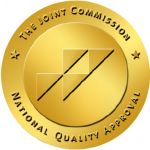It’s common for people with substance use disorders (SUD) to also be diagnosed with another disease or illness. These disorders are then described as “comorbid”. Comorbidity can mean that the illnesses interact, affecting the course and prognosis of both.
Many individuals who have a SUD are also diagnosed with mental disorders. Numerous national population surveys have demonstrated that about 50% of those who experience a mental illness during their lives will also experience a substance use disorder. Even though there are fewer studies on comorbidity among youth, research shows that adolescents with substance use disorders also experience high rates of co-occurring mental illness. More than 60% of adolescents in community-based substance use disorder treatment programs also met diagnostic criteria for another mental illness.
Common Comorbidities With Substance Use
More specifically, data display high rates of comorbid substance use disorders and anxiety disorders. Under the category of anxiety disorders includes generalized anxiety disorder, panic disorder, and post-traumatic stress disorder. Additionally, SUDs also commonly co-occur at a high prevalence with mental disorders, such as depression, bipolar disorder, attention-deficit hyperactivity disorder (ADHD), psychotic illness, borderline personality disorder, and antisocial personality disorder.
Moreover, those diagnosed with schizophrenia also have higher rates of alcohol, tobacco, and drug use disorders than the general US population. The overlap in disorders with SUDs is especially prevalent with serious mental illness (SMI). SMI among individuals ages 18 and older is defined at the federal level as having, at any time during the past year, a diagnosable mental, behavior, or emotional disorder that causes serious functional impairment that substantially interferes with or limits one or more major life activities. The illnesses classified as SMI include major depression, schizophrenia, and bipolar disorder. Although, other mental disorders that cause serious impairment can also be classified as SMI. Research has found that around 25% of individuals with SMI also have a SUD.
Data from a nationally representative sample also found that people with mental, personality, and substance use disorders were at increased risk for nonmedical use of prescription opioids. The research indicated that 43% of people in SUD treatment for nonmedical use of prescription painkillers have symptoms or a diagnosis of mental health disorders, specifically depression and anxiety.
Comorbidity Risk Factors
Three prominent pathways may contribute to the comorbidity between substance use disorders and mental illnesses. Firstly, there are common risk factors that can contribute to both mental illness and substance use and addiction. Secondly, mental illness may contribute to substance use and addiction. Lastly, substance use and addiction can contribute to the development of mental illness. In sum, both substance use disorders and other mental illnesses are a result of overlapping factors such as genetic and epigenetic vulnerabilities, issues with similar areas of the brain, and environmental influences such as early exposure to stress or trauma.
Difficulties Making A Diagnosis
It is important to note that the high prevalence of comorbidity between substance use disorders and other mental illnesses does not necessarily mean that one caused the other, even if one appeared first. With any type of research, it is important to not confuse correlation with causation. With that said, for several reasons, establishing causality or directionality is not possible for comorbidity. For instance, behavioral or emotional issues may not be intense enough for a diagnosis. In this case, the issues the individual is experiencing are then classified as subclinical symptoms. Yet, the subclinical mental health issues may initiate drug use.
Additionally, the individuals’ recollections of when drug use or addiction began may not be fully accurate, making it tough to determine whether the substance use or mental health issues surfaced first. However, it is widely hypothesized that individuals with severe, mild, or even subclinical mental disorders may use drugs as a form of self-medication and as a way to cope. Many drugs may temporarily reduce symptoms of a mental illness, but they can also worsen symptoms. Evidence suggests that repeated cocaine use may worsen the symptoms of bipolar disorder and augment the progression of the disorder.
Furthermore, when an individual develops a mental illness that is associated with changes in brain activity, there may be an increase in the vulnerability for disordered use of substances by increasing their rewarding effects, decreasing awareness of their negative effects, and softening the symptoms of the mental disorder or the side effects of the medication used to treat it. Neuroimaging has shown that ADHD is associated with neurobiological changes in brain circuits that are also correlated with drug cravings. This finding helps partially explain why patients with substance use disorders report greater cravings when they have comorbid ADHD.
Substance use can also lead to alterations in some of the same brain areas that are disrupted in other mental disorders, such as schizophrenia, anxiety, mood, or impulse-control disorders. Basically, drug use that precedes the first symptoms of a mental illness may produce changes in brain structure and function that promote an underlying predisposition to develop that mental illness.
Treatment For Co-Occurring Disorders
The rising rate of comorbidity between drug use disorders and other mental illnesses intensifies the need for an integrated approach to intervention that identifies and evaluates each disorder concurrently and provides treatment appropriate for each clients’ unique combination of disorders. In the United States, an enhanced understanding of the neural, genetic, and environmental substrates of these disorders can lead to transformative treatments for individuals with comorbidities and may help decrease the social stigma that makes some clients too shameful to seek the treatment they need.
Extensive assessment tools should be used to decrease the risk of a missed diagnosis. Clients who have a substance use disorder and another mental illness often display symptoms that are more persistent, severe, and resistant to treatment compared with patients who have either disorder alone. Upon our clients’ intake session for entering treatment at Boardwalk Recovery Center, our staff and facility’s psychiatrist screens for psychiatric illnesses. With the up-to-date knowledge that our recovery center has about the comorbidity between substance use disorders and mental illnesses, we believe that the same screening should be done for substance use disorders at psychiatric facilities, the same way psychiatric illnesses are accounted for at our substance abuse recovery center.
Accurate diagnosis is important and intricate; therefore when our clients enter treatment, it may be necessary to observe them after a period of sobriety to distinguish between the effects of substance intoxication or withdrawal and the symptoms of comorbid mental disorders. This precaution in protocol results in more accurate diagnoses and allows for thorough and truthful treatment. We also recognize that integrated treatment for comorbid substance use disorders and mental illnesses has been found to result in greater recovery successes compared to separate treatment for each diagnosis. This integrated treatment of co-occurring disorders usually includes cognitive behavioral therapy approaches and collaboration between clinical providers and supportive services to combat all mental and physical illnesses experienced by our clients. Many of our clients at Boardwalk Recovery Center experience comorbidity with their substance use disorder and a mental illness, but have nonetheless succeeded in their sobriety.
Research on this topic has also shown that clients with comorbid disorders have poorer treatment adherence and increased rates of treatment dropout than those without mental illness. This of course, negatively affects outcomes. Fortunately, persistent progress is being made through research on new and existing treatment options for comorbidity. Resultantly, the research can be implemented to provide appropriate screening and treatment within a variety of settings, including criminal justice systems. This will enhance access to appropriate treatment for comorbid disorders for all.
Ready to Talk About Next Steps?
When substance use and mental health concerns converge, healing requires an integrated and individualized approach and that’s exactly what we offer at Boardwalk Recovery Center. From your initial confidential screening to a tailored, evidence-based treatment plan, our team addresses all aspects of your care including psychiatric evaluation and dual diagnosis treatment. If you’d like to learn more or just want a compassionate conversation, give us a call or visit our contact page to reach out. You’re not alone and we’d like to show you what life can look like on the other side.
Life can be good again and we’d like to show you how.






